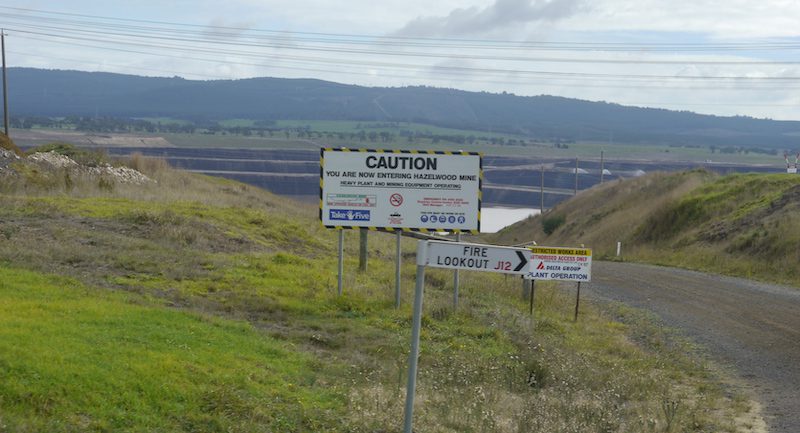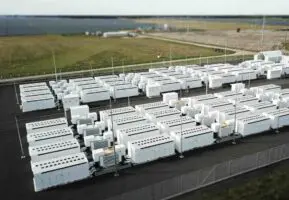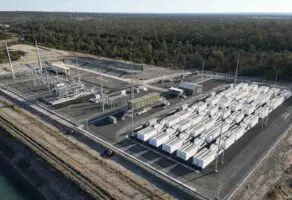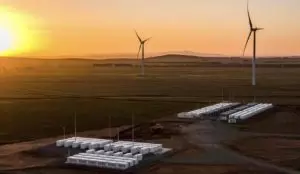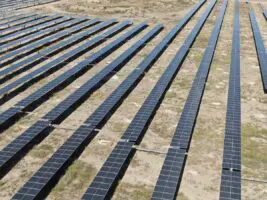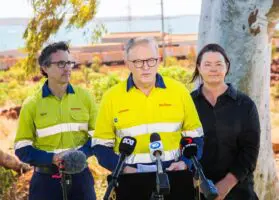French energy giant Engie says it will not be venturing back into power generation in the Latrobe Valley, as the $1 billion Hazelwood mine rehabilitation plans stall.
The company intends to hold on to a small parcel of land on the former mine site to eventually scale up its new 150 megawatt (MW), one hour Hazelwood battery, which began operations last week, and corporate affairs boss Ryan Auger says battery storage is the sole game in Gippsland now.
“It will be storage for Engie. It’s not going to be gas, it’s certainly not going to be thermal,” he told RenewEconomy during a site tour earlier this week.
“We already have the permit associated with the 150 MW (battery), so we can turn it into 400 MW relatively simply.
“We’ve always been of the view that there are wind and solar resources here in Latrobe Valley, but they’re not the highest quality.
“Grid infrastructure helps, but it doesn’t necessarily make a project economical. It makes it easier to do and easier to permit and easier to access. And you’d get that goldilocks spot like Engie’s got here. But when you start talking about scale and a return on investment [it doesn’t stack up].”
The new battery, a joint venture of Engie and Eku Energy, the newly formed big battery subsidiary from Macquarie’s Green Investment Group, will be commissioned on June 14 and is fully merchant, meaning it will make money solely from arbitraging high and low energy pricing.
With the rehabilitation program now subject to federal and state scrutiny, Engie is still looking at whether it sells off parcels of rehabilitated land, such as for grazing, over time, or rehabilitates the entire site and then starts negotiations with the state government.
The 1600MW Hazelwood coal fired power station and mine was closed in 2017 without just a few months warning, causing significant turmoil in energy markets and within the Morwell community which depended on it for jobs.
Water problems
Engie is proposing to cover the ash dump at the north of the void with a cap of either clay, a geomembrane, or both, and flood the whole with water sourced from aquifers, surface flood waters, and “other” sources. The bottom of the pit, which is below the water table, is already partially filled with water from these sources.
The company’s Environmental Effects Statement (EES) lead Adam Moran says filling the pit with water is necessary to prevent heave, a situation where groundwater presses on the floor and sides and forces them upwards, causing these to become unstable and slip and creating an unacceptable risk to the Princess Freeway and the town of Morwell.
Filling the pit with solid material is complicated because of the volume — a maximum of 2.5 cubic kilometres — required.
Community groups such as Friends of Latrobe Water and Environment Victoria have questioned where the proposed 637 gigalitres of water to form a pit lake is supposed to come from, given the current and modelled climatic changes that forecast a drier future for the region, and given both the Yallourn and Loy Yang mines are also slated to become pit lakes.
Moran says the company has existing water licences that it could vary in order to fill the void.
Other questions the Morwell community have raised is whether, during the filling period, water could move any cap covering the ash dump, what impact the ash is already having on groundwater, and whether there are any ways it can escape into the lake itself to create an unswimmable, unusable legacy.
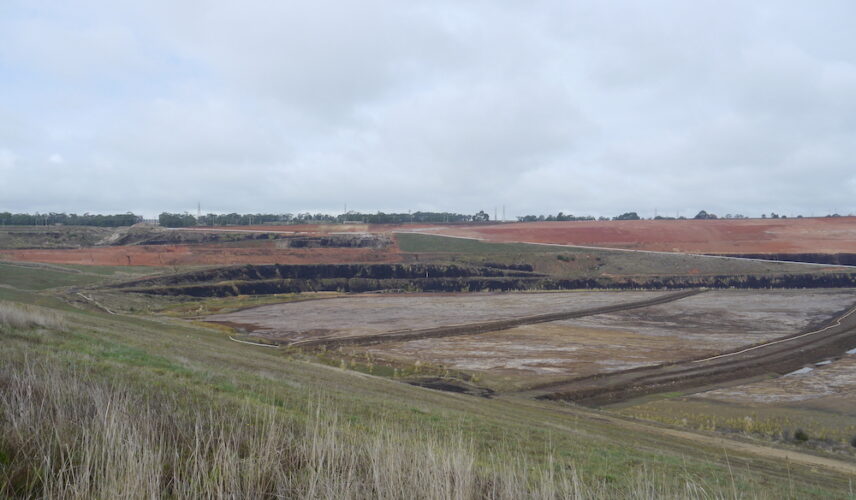
Heading into bureaucracy
Aside from battering works along the sides of the mine, the significant parts of the $1 billion mine rehabilitation have stalled.
The Victoria government signed off on an EES, the state’s most rigorous environmental analysis process available, in February 2022 on the back of community concerns.
The federal government referred Engie under the Environment Protection and Biodiversity Conservation Act (EPBC) in February this year to assess how the proposal will affect the Ramsar listed Gippsland Lakes, and local threatened and migratory species.
The two processes will run in parallel, with draft scoping requirements for the state process released in April, and it means that Engie’s plans are now subject to their outcomes.
“ENGIE has previously provided over 100 studies, reviews, and work packages to government,” Auger said.
“However, the commencement of the EES reinitiates these work programmes and should be seen as a standalone process that draws on, but is not limited by, that earlier work. As such, we do not generally share that earlier work now.”
Voices of the Valley president Wendy Farmer hopes more than expects both processes will answer some of the myriad questions in the local community.
“Mine rehabilitation was always to return the land for use to the community. There’s many ideas floating around our community on what they would like to see but there’s still too many questions about that safety,” she told RenewEconomy.
“Hazelwood closed in 2017 and they still don’t have a proper plan.
“It has to be safe and suitable for the community and not leave a toxic legacy. At the moment Engie’s plan is to flood the mine with a Sydney harbour volume of water,” Farmer said.
“There’s too many questions when it comes to flooding the mine. Is it safe? Does water run through cracks underground? We know coal dries and you get cracks. Would it give us stability issues? Where will the water come from? How long will it take to fill the mine? Who else misses out on the water?”

